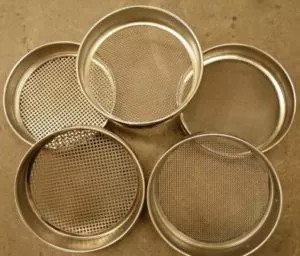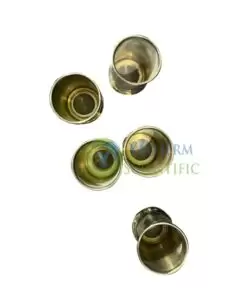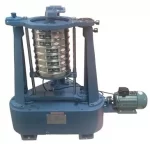Test sieves are critical instruments for precise particle size analysis in a variety of industries, including pharmaceuticals, food processing, and mining. This guide will provide you with a comprehensive understanding of test sieves, including their types, sizes, and how to use them effectively for accurate particle size analysis.
Understand the basics of particle size analysis
Before using test sieves for particle size analysis, it’s important to understand the basics of particle size analysis. Particle size analysis is the process of determining the size and distribution of particles in a sample. This information is critical in many industries, as it can impact the quality and performance of products. There are several methods for particle size analysis, including microscopy, sedimentation, and laser diffraction, but test sieving is one of the most widely used methods.
Choose the right test sieve for your application
When selecting a test sieve for your particle size analysis, it’s important to consider the size range of particles you are testing, as well as the material of the particles. Test sieves come in a variety of sizes and materials, including brass, stainless steel, and nylon. Brass and stainless steel are commonly used for larger particle sizes, while nylon is often used for smaller particle sizes. It’s also important to ensure that the test sieve meets industry standards, such as ASTM or ISO, to ensure accurate and reliable results.

Prepare your sample properly
Before particle size analysis, it’s important to properly prepare your sample. This includes ensuring that the sample is representative of the material being tested, and that it is properly dried and free of any clumps or aggregates. It’s also important to use the appropriate amount of sample for the size of the test sieve being used, as overloading or under loading the sieve can affect the accuracy of the results. Finally, it’s important to use a consistent and controlled method for shaking or tapping the sieve to ensure consistent results.
Conduct the sieving process correctly
Once your sample is properly prepared, it’s time to conduct the sieving process. Start by placing the test sieve on top of a collection pan or container. Then, add the appropriate amount of sample to the sieve. Use a brush or spatula to gently distribute the sample evenly across the sieve.
Next, begin shaking or tapping the sieve in a consistent and controlled manner. The exact method will depend on the type of sieve and equipment being used, but it’s important to avoid any sudden or jerky movements that could affect the results.
Continue shaking or tapping the sieve until no more particles are passing through. This may take several minutes, depending on the size of the sample and the sieve being used. Once the process is complete, carefully remove the sieve from the collection pan and record the results.
By following these steps and using proper technique, you can ensure accurate and reliable particle size analysis using test sieves.

Analyze and interpret your results accurately
After conducting the sieving process, it’s important to accurately analyze and interpret your results. Start by carefully examining the particles that were collected in the collection pan. Are they all the same size, or are there variations?
Next, calculate the percentage of particles that passed through each sieve. This can be done by weighing the particles collected in each sieve and dividing by the total weight of the sample.
Finally, use this information to create a particle size distribution curve. This curve will show the percentage of particles that fall within each size range, allowing you to better understand the characteristics of your sample.
Remember, accurate analysis and interpretation of your results is crucial for making informed decisions about your sample. Take the time to carefully review your data and ensure that your conclusions are based on reliable information.
Read more about Sieve Shaker and Vacuum Oven by Yatherm scientific manufacturer of scientific equipment.





